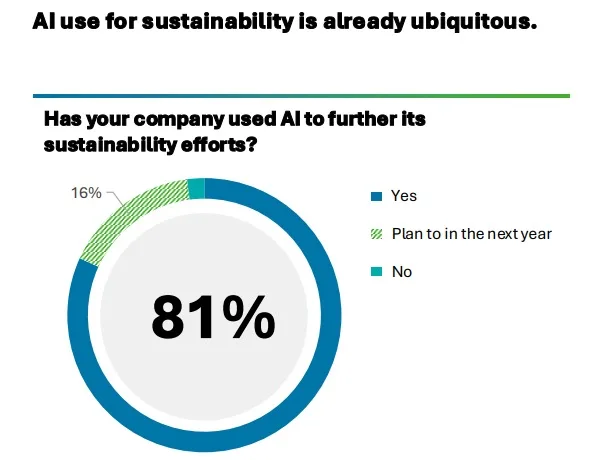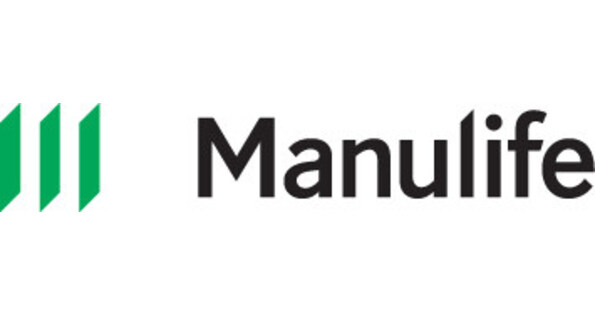Introduction
Good morning. It’s a pleasure be here to celebrate the 100th anniversary of the Central Bank of Chile. The topic of my remarks today is inflation targeting, which is both an important part of Chile’s central banking history and a core foundation of successful monetary policy.
Most central banks around the world have adopted inflation targeting regimes over the past 35 years, and Chile was among those leading the way. Although specifics vary across jurisdictions, these strategies share three principles: independence and accountability, transparency and the clear communication of an inflation target, and well-anchored inflation expectations, gained from the credibility that central banks build over time.1
Today I will discuss the success of inflation targeting strategies in helping central banks achieve price stability and better economic outcomes. I’ll also talk about how these strategies were critically important in managing uncertainty after the onset of the COVID-19 pandemic—and how they helped countries bring inflation down while minimizing disruptions to financial markets and economies.
But first, I must give the standard Fed disclaimer that the views I express today are mine alone and do not necessarily reflect those of the Federal Open Market Committee (FOMC) or others in the Federal Reserve System.
Autonomy, Transparency, and Confidence
Inflation targeting is like guiding an excursion through the Andes. Independence gives the central bank the ability to choose the best path to meet its objectives. Transparency ensures that people understand where they are headed and why the route may change. And a central bank earns public confidence by consistently reaching its goals, even amid sudden detours and a jagged course, laying the groundwork for maintaining well-anchored inflation expectations.
Inflation targeting strategies were introduced and have evolved as central banks sought to avoid repeating prior mistakes. Too often in the past, some central banks behaved as if they were powerless to control inflation in the face of shocks. Over time, they found they could be more successful at delivering price stability when they owned the responsibility for that goal and had the independence of action and tools to achieve it.
Transparency—including clear communication of an explicit numerical inflation target—reinforces public accountability for price stability and focuses the internal policy debate on how best to attain that objective. The Central Bank of Chile established a 3 percent inflation target when it formally adopted its current framework in 1999.2 And the Federal Reserve set an inflation goal of 2 percent over the longer run, which it announced in an FOMC statement in January 2012.3
By communicating an explicit inflation target—and then delivering inflation consistent with that goal—central banks establish and reinforce trust with the public. But transparency does not stop with declaring a destination. It also means describing the road ahead to reach that goal. Many inflation-targeting central banks, including the Central Bank of Chile, provide detailed analyses of their economic situations, outlooks, and risks.4
Transparency about goals, strategy, and what that means for policy helps to anchor inflation expectations, which, in turn, contributes to low and stable inflation.5,6 The feedback loop between effective policy actions and communications, well-anchored expectations, and price stability is now a core tenet of modern central banking. It short-circuits so-called second-round effects in wage and price setting that exacerbate and prolong the effects of shocks.
Put to the Test
Inflation targeting regimes were instrumental in bringing about a prolonged period of price stability in many countries through 2020. But it wasn’t until the onset of the COVID-19 pandemic that they were truly put to the test.
The pandemic, followed by Russia’s war on Ukraine, dealt the most dramatic supply shocks to the world’s economy in generations. Starting in 2021, global supply-chain disruptions, along with acute imbalances between supply and demand, led to inflation skyrocketing around the world. Inflation peaked at over 7 percent in the U.S.7 and at over 14 percent in Chile.8 Other Latin American countries, as well as Canada and Europe, followed similar patterns.
While the sources of inflation were comparable across countries, they affected countries differently. For example, supply-chain bottlenecks and higher commodity prices hit Chile and other countries especially hard. In addition, inflation accelerated earlier and with greater force in Latin American countries than in advanced economies.9
In response, central banks leaned into their inflation targeting strategies to guide their economies to bring inflation down. Many benefited from the public trust built from years of low and stable inflation. As a result, longer-term inflation expectations remained well anchored in the U.S., Chile, and other Latin American countries.10 This was a key difference between this episode and bouts of high inflation in the past, boding well for disinflation to occur.
The connections between policy communications and actions, inflation outcomes, and expectations are at the core of policy strategies that are robust to extreme uncertainty, a topic that Athanasios Orphanides and I studied in a sequence of research papers.11 If a central bank has credibility in achieving price stability, longer-term expectations should remain anchored at levels consistent with its inflation target.
Carving Their Own Paths
During my tenure at the Fed, the comment I’ve heard most often from economists and central bankers in emerging market countries is that the Fed’s actions have meaningful effects on the capital flows and exchange rate movements in their countries. We saw this in action during the so-called taper tantrum in mid-2013. After Fed Chairman Ben Bernanke indicated that the FOMC might start tapering the pace of its asset purchases later that year, U.S. Treasury yields rose sharply, causing significant volatility in global financial markets—particularly for emerging market economies.
What is striking to me is that after the onset of the pandemic, those concerns were not nearly so top of mind. Until COVID-19, central banks in emerging economies, including many in Latin America, typically had followed the lead of the Fed when responding to shocks. This time, because they did not want to risk a new episode of very high inflation and thus potentially lose their hard-earned credibility, they moved first.12 Latin American central banks acted quickly and decisively to tame high inflation by raising interest rates, starting with Brazil in the spring of 2021, followed by Chile, Colombia, Mexico, and Peru later that summer.13 In contrast, central banks of many advanced economies—including the Bank of England, the Federal Reserve, the Bank of Canada, and the European Central Bank—raised rates later and by smaller amounts.
Around the world, inflation—and the responses of central banks—largely rose and fell along the same path. Following central banks’ actions, inflation declined across the board, and economies weathered the disinflation much better than anticipated. And despite big movements in interest rates across countries, disinflation occurred without dramatic disruptions to capital flows, exchange rates, or financial markets. It’s a true testament to the success of inflation targeting.
The Current Situation
This brings me to the current situation. As I have emphasized, inflation targeting is a strategic framework that provides the foundation for effective policy decisions and communication. The decisions and actions themselves depend on the circumstances that policymakers face.
Here in Chile, in the United States, and across the globe, strong actions have proven effective at restoring price stability. In some cases, inflation has returned comfortably back to target levels, while in others, including the United States, the job of bringing inflation sustainably back to target is not yet complete.
I’ll comment briefly on the current economic situation in the U.S. and what it means for monetary policy. Economic growth has slowed from its pace last year, and the labor market has gradually cooled. In particular, indicators of the balance between labor demand and supply, including the unemployment rate, have gradually softened over the past year, reaching levels seen prior to the pandemic when the labor market was not overheated. I would emphasize that this has been an ongoing, gradual process, without signs of a significant rise in layoffs or other indications of a sharp deterioration in the labor market.
Inflation declined from a peak of 7-1/4 percent in mid-2022 to 2-3/4 percent in 2024. Looking back at FOMC participants’ projections in December of last year, the median expectation was for inflation to slow to 2-1/2 percent this year and approach 2 percent next year. Since then, the effects of trade policies and other developments have boosted U.S. inflation somewhat, offsetting the expected downward trajectory. As a result, progress toward our 2 percent goal has temporarily stalled, with the latest available data indicating that inflation remains around 2-3/4 percent.
It is not possible to measure the effects of trade policy actions on inflation with precision. My estimate is that increased tariffs have contributed about one half to three quarters of a percentage point to the current inflation rate. I do not see any signs of tariffs contributing to second-round or other spillover effects on inflation. In particular, inflation expectations are very well anchored, no broad-based supply chain bottlenecks have emerged, labor markets are not creating inflationary pressures, and wage growth has moderated. As a result, I expect the effects of tariffs on inflation will play out over the rest of this year and the first half of next year. Inflation should thereafter get back on track to 2 percent in 2027.
Given this backdrop, monetary policy is very focused on balancing the downside risks to our maximum employment goal and the upside risks to price stability. My assessment is that the downside risks to employment have increased as the labor market has cooled, while the upside risks to inflation have lessened somewhat. Underlying inflation continues to trend downward, absent any evidence of second-round effects emanating from tariffs. For these reasons, I fully supported the FOMC’s decisions to reduce the target range for the federal funds rate by 25 basis points at each of its past two meetings.
Looking ahead, it is imperative to restore inflation to our 2 percent longer-run goal on a sustained basis. It is equally important to do so without creating undue risks to our maximum employment goal. I view monetary policy as being modestly restrictive, although somewhat less so than before our recent actions. Therefore, I still see room for a further adjustment in the near term to the target range for the federal funds rate to move the stance of policy closer to the range of neutral, thereby maintaining the balance between the achievement of our two goals. My policy views will, as always, be based on the evolution of the totality of the data, the economic outlook, and the balance of risks to the achievement of our maximum employment and price stability goals.
Conclusion
In conclusion, central bank independence and accountability, clear communication and an explicit inflation target, and well-anchored inflation expectations have proven to be invaluable in ensuring price stability in the face of unexpected shocks and extreme uncertainty.
Sharp turns and unpredictable terrain have been an unavoidable part of our journey, and we must accept that shocks and uncertainty will continue to define our future. I am confident that inflation targeting strategies will continue to serve us well against any challenges we may face ahead.








